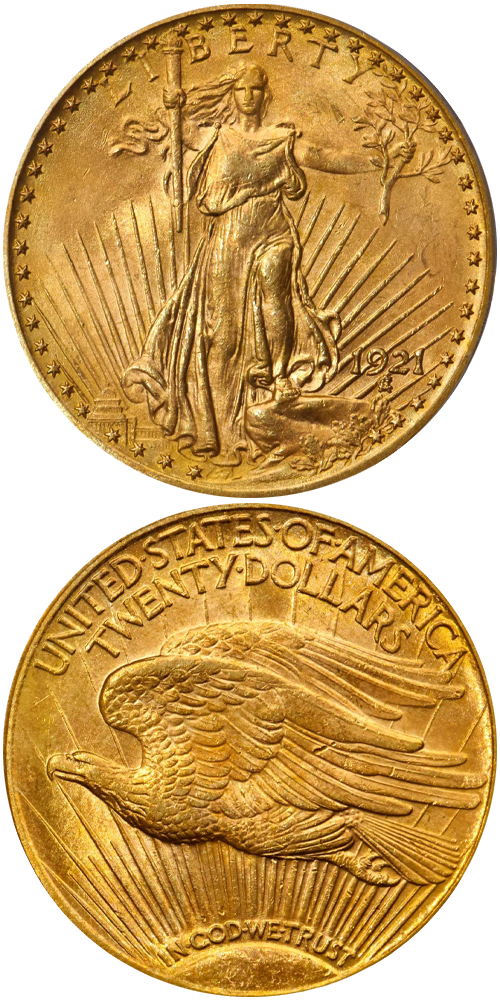1921 Saint Gaudens Double Eagle
The 1921 was produced to the extent of 528,500 pieces, a respectable total for a circulation strike double eagle from the early to mid Saint-Gaudens series. As with so many issues of this type, however, it is not the number of coins struck that determines rarity in today's market, but rather the manner in which the coins were distributed after striking. Many double eagles produced during the 1920s were exported in quantity, predominantly to Europe where the post-World War One economy was starved for gold bullion. The issues most widely represented in this export trade were the 1920, 1922, 1922-S, 1923, 1923-D, 1924, 1925, 1926, 1927 and 1928. Tightly held by European financial institutions for decades, these coins were eventually repatriated during the later decades of the 20th century, accounting for most of the examples in today's market.
On the other hand, the 1920-S, 1921, mintmarked issues from 1924 to 1931, and Philadelphia Mint issues from 1929 to 1932 were largely retained in federal vaults, primarily as backing for gold certificates. Limited quantities of these issues were exported or otherwise released from storage before the government stopped paying out gold coins at face value in April 1933. Beginning the following year, the government began to call in gold coins from the public, excluding those of recognized numismatic value. These recalled pieces were destroyed through melting in 1937, along with the millions of undistributed double eagles and other gold coins that had never left government storage. With only 150 or so coins extant in all grades, virtually the entire mintage for the 1921 double eagle met this fate.
The example to the left was sold by Stack's Bowers Galleries in the August 2020 Showcase Auction, where it realized $192,000.






